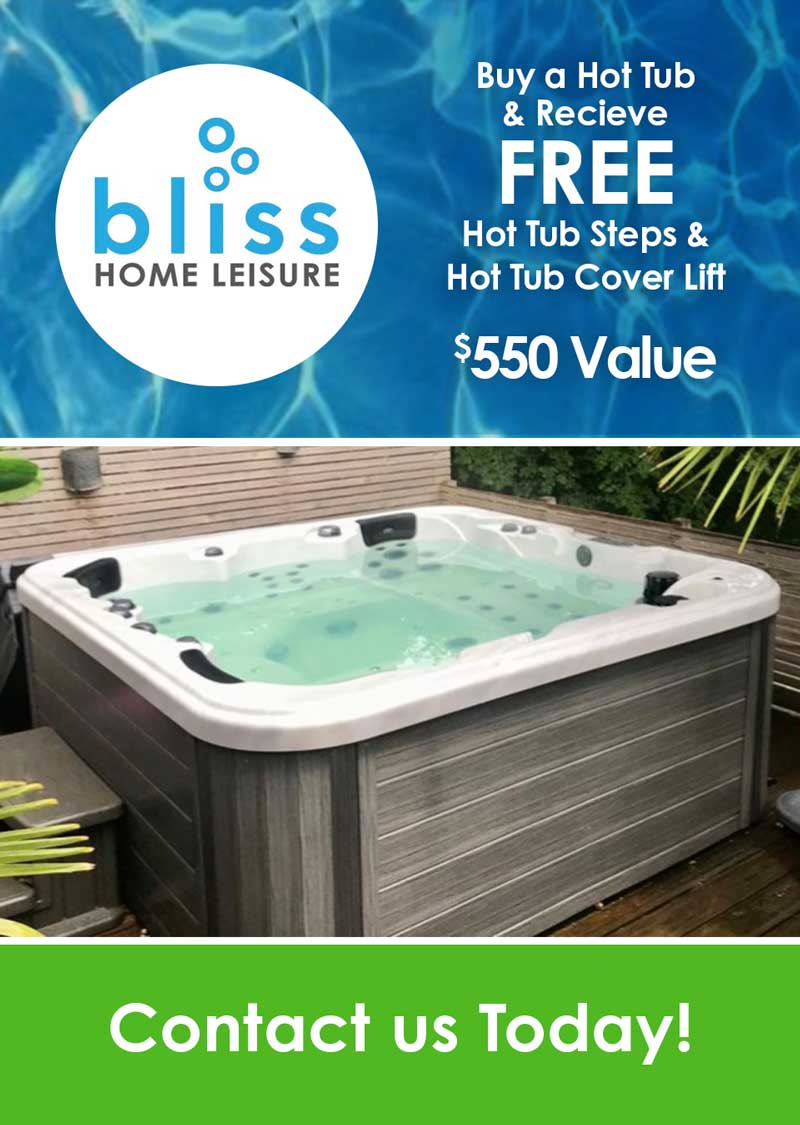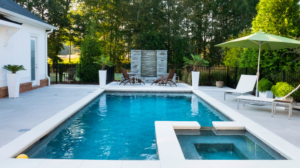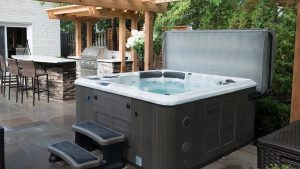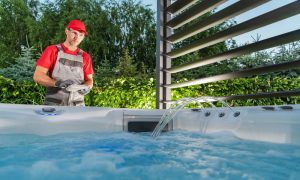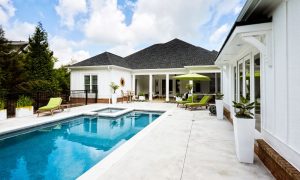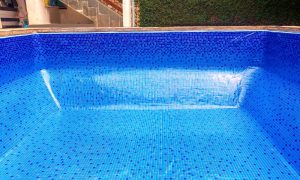Getting your Trinity Audio player ready... |
Pools are great ways to cool off and have fun with family and friends in the summertime, but green pool water can damper the experience.
Green water in your swimming pool can be frustrating since you can’t see the bottom of your pool and all the debris that gathers there. Over time, this can build into a big problem that’s difficult to fix, but you don’t have to worry about that.
If you’re tired of opening up your pool only to find it has gone green, don’t worry. We have provided some quick fixes for green pool water treatment.
These will work for above-ground and in-ground pools, so pick what works best. Remember, the longer you wait to fix it, the more expensive it will be!
Why Is My Pool Green?
When you see your pool water turn from its usual bright blue to an ugly greenish colour, it can be hard not to panic.
You may ask yourself if something is wrong or if someone has done something malicious against you.
But most times when this happens, the answer to why your swimming pool water looks this way is due to a chemical imbalance which will depend on what type of pool you have – whether it’s an in-ground or above-ground pool.
Algae Growth
Algae overgrowth is the most common cause of green pools.
Algae is usually caused by still water, natural die-off during cool weather, and appropriate chemical balances.
When these things aren’t correct, algae will grow out of control, causing a pool to turn murky and green.

You’ll find naturally occurring algae in ponds and streams, but they’re not as intense, so it’s less of a health risk. And if you notice an increase in harmful bacteria (which would also lead to varying degrees of odor), then it’s time to stay out.
If your pool has begun to have excessive algae growth, you may need to take steps to address this problem.
To start, begin by identifying the type of algae in your water. A few different types are found in pools, and they all require different methods of addressing the issue.
If your pool has a green algae growth, it can be treated by draining half of the water from the pool and adding one-half cup bleach for every 4500 gallons of water drained.
Pollen And Metals
Pollen and metals can also lead a pool to turn green.
Pollen has a naturally yellow hue which can cause some pools to look green; this is due to the metallic corrosion in the pool, or it could be due to oxidizing metal elements such as pump parts, ladders, etc.
These metals react with pool chemicals and release material that throws off its chemical composition.
To prevent this from happening, you should use a pool cover while not in use and have Bliss Home Leisure check all equipment for wear and tear.
Chlorine
Chlorine levels may be too low.
The pungent scent of chlorine evaporating from pool water triggers nostalgic reminders of summer days, but when the pH levels are right, you should not be able to smell it.
Using chlorine has been found to cleanse drinking water and pools alike – because it will kill anything that could harm people.

When everything is balanced, the chemicals will take care of all the algae without adding any extra chemicals.
However, using too much chlorine can cause metal ions to oxidize and create an iridescent tinted green surface which looks unusual compared to an average swimming pool.
Anyone still having trouble keeping these high standards afloat through their efforts may want to consult a pool professional to discuss other methods for sanitizing their pool rather than just relying on one technique (such as chlorine).
High pH Level
Alkalinity levels are determined by the strength of acidity in a solution. Maintaining an ideal pH range for sanitation and aesthetic purposes is crucial.
If the water becomes too alkaline (above 7.8), the chlorine will no longer be effective at killing bacteria or algae growth.
This can happen if you are not regularly monitoring your pool’s alkalinity levels, so when it reaches this point, use a pH reducer such as sodium bisulfate or muriatic acid to lower it back to an acceptable level.
Filter Issue
The work of the pool filter is to suck up all of the dirt that gets kicked around in the water while removing algae, pollen, and anything else hazardous.
This usually causes some pools to look cloudy – so if you’re wondering why my pool looks so murky? Then chances are something went wrong with your filter.
You might not be letting it run for long enough to do its job effectively – depending on how hot it is outside, running it for 8 hours a day would be ideal, but when there are a lot of people using the pool at once, it could take even longer.
If you’re making sure to let your filter run every day (and stay within an appropriate range), then maybe it just needs some extra attention – cleaning or replacing parts will work.
If none of these things clear up the issue, then perhaps replace your whole unit altogether.
Pool Phosphate Level
If there are high levels of phosphates in your pool (usually included when doing a basic test for pool water), then algae will thrive because it becomes its natural food source.
The solution is to balance out the amount of chlorine used – although some websites suggest you could try scrubbing or adding heavy chemical boosters that would reduce the number of phosphates dramatically.
DIY Green Pool Water Treatment
Here are the steps you can take to eliminate the green pool in your home.
Testing and Balancing water
To keep your pool clean, we recommend starting by testing the water before you put it in. You need to see what kind of things are wrong with it to know how to fix them later on.
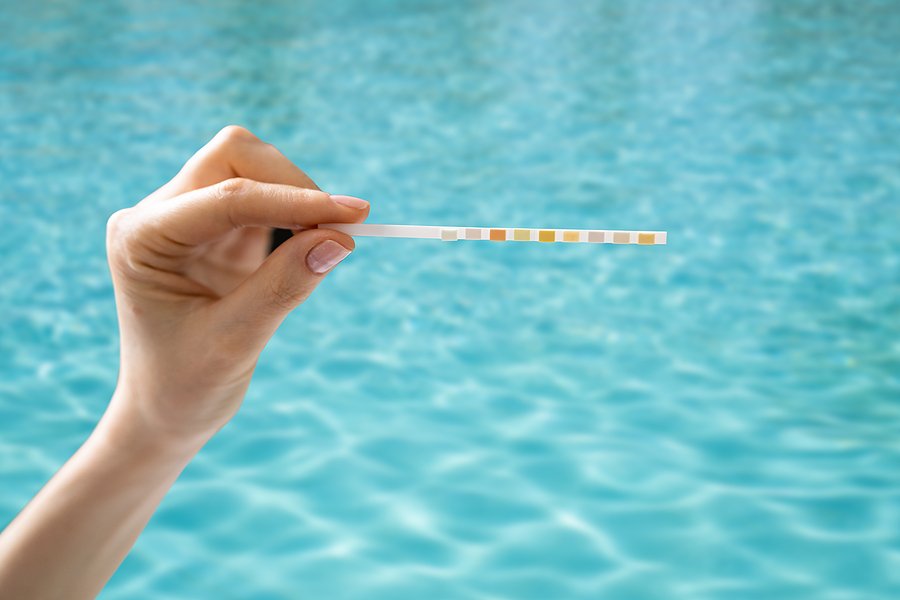
There are many different things to look out for – one thing is getting too much or too little chlorine in there.
It can also turn green if there isn’t enough chlorine around and if the pH gets off balance too much either way.
But don’t worry! You’ll need to add more chlorine and sanitizers once this gets out of whack again.
Cleaning The Pool
Skim the surface of your pool to remove any visible debris. Brush up against the walls, vacuum skimmers, and empty them.
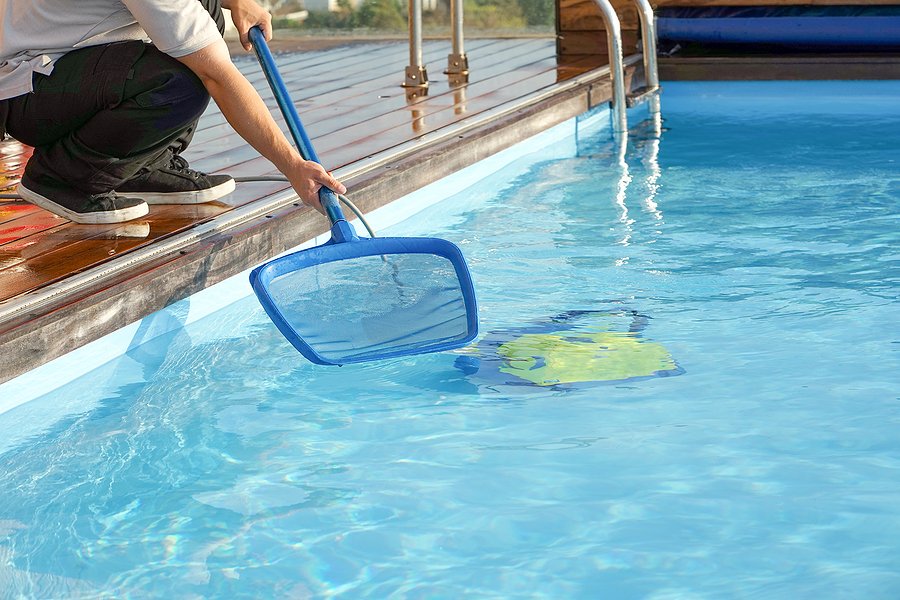
Focus on areas with visible dirt and little or no circulation to remain clear for long periods.
Regular cleaning helps keep algae away by keeping all other pollutants off your water’s surface.
Applying Shock Treatment
You can’t get clean water if you don’t clean your pool. This process helps to remove any contaminants that could contribute to algae growth and also will help improve the filtration of the pool’s water.
Algaecide Application
Algaecides can assist in treating and preventing pool algae. However, not all algaecides kill green pools of algae; it is important to find one that will work for your specific type of body of water. For the most effective treatments, always follow directions closely.
Filter cleansing
Cleaning your filter according to the instructions. Allow it time to take a break for about 24 hours so that all gallons of water can go through it before running again.
Conclusion
Whether you choose to take control of your own pool care or schedule professional visits for opening and closing your pool, there are benefits either way.
Doing it yourself you may spend less on chemicals but It may even turn out that contracting professionals will work out cheaper in the long term.


